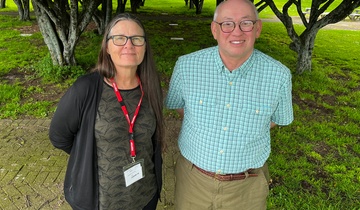One method of promoting the repopulation of declining shellfish beds is to reseed them with adults of the target species collected from other areas. Reintroducing adult shellfish is labour intensive but will, if successful, encourage juveniles to recruit to declining areas and replenish them to historic levels.
Land development and overfishing have taken a toll on our coastal habitats; over the last few decades estuaries around New Zealand have experienced loss and depletion of vegetation, fish and shellfish stocks. Community groups are trying to reverse these environmental impacts through restoration projects such as active reseeding of declining shellfish beds.
A declining shellfish bed needs to first be evaluated to determine its suitability for restoration. It is important to predict whether species collected from other habitats are likely to survive in the new area.
Case study: active reseeding of Whangarei Harbour
NIWA scientists worked with the Northland Regional Council and the local caretaker group, the Whangarei Harbour Kaitiaki Roopu, to develop a successful method of reseeding cockles (Austrovenus Stutchburyi). The research looked at:
- determining the optimal cockle sizes to transplant
- optimal densities and whether the reseeded cockles affected numbers and types of juvenile shellfish and other fauna
- whether to cage the transplanted stock to protect it from predators.
From the experiences of the groups involved in the Whangarei Harbour project, we have learned that restoration can be successful if shellfish beds are monitored in the years following the initial reseeding, and when the whole community is involved.
NIWA has developed a guide (below) for community groups to follow when undertaking shellfish reseeding, in part based on the knowledge gained from the Whangarei Harbour project.
Restoring shellfish beds to harbours and estuaries: a guide for community groups (PDF 1 MB)
Giving our estuaries a helping hand: restoring shellfish beds in Whangarei Harbour (PDF 290 KB)
Optimising the success of Austrovenus Stutchburyi restoration: preliminary investigations in a New Zealand estuary (PDF 342 KB)
Shellfish restoration project flowchart
Flowcharts for the restoration of shellfish, as well as helpful hints, are shown on the right hand side (click on the images to enlarge them).









